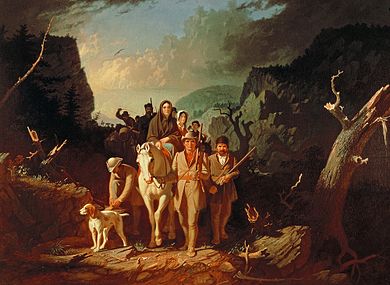The Making of the 50 States: Kentucky
Part 1: In the Beginning Kentucky was, as were other states, populated by Native Americans early on. Among the tribes who lived in what is now Kentucky were the Adena, Cherokee, Chickasaw, Kentucky, Hopewell, Mosopelea, Shawnee, Wyandot, and Yuchi. These Native Americans grew large amounts of the "Three Sisters," beans, maize, and squash and hunted local deer for food. They also grew tobacco. Much archaeological evidence points to a mound-building tradition in the area as well, and some archaeologists have drawn a connection to the Fort Ancient culture, which created, among other things, the Serpent Mound, in what is now Ohio. Europeans from France, Great Britain, and the Netherlands explored the area in the 17th and 18th Centuries. One of the most well-known French explorers, René-Robert Cavelier, Sieur de la Salle, claimed all of the land along the Mississippi River Valley for France. That claim included Kentucky. Also passing through the area were Frenchmen Jacques Marquette and Louis Jolliet.
The first European settlement in Kentucky was Harrod's Town, named after the explorer and settler James Harrod, in 1774. Several sources say that Great Britain promised no further settlement beyond the Appalachian Mountains; regardless, further British settlement followed, facilitated in part by Daniel Boone (the namesake of another settlement, Boonesborough). War between British settlers and Shawnee warriors followed, in a struggle known as Dunmore's War. After the British victory, businessman Richard Henderson engineered a purchase of a large part of the land, a process that resulted in the Treaty of Sycamore Shoals, in 1775. European settlement in Kentucky continued after that, with settlers by the dozens navigating the Cumberland Gap (and Boone's Wilderness Road) and the Ohio River to leave their homes in North Carolina, Pennsylvania, and Virginia and put down new roots in Kentucky. The rate of settlement accelerated during the Revolutionary War; in response, some Native American tribes, notably the Shawnee, fought alongside Great Britain. Next page > The Rest of the Story > Page 1, 2
|
|
Social Studies for Kids
copyright 2002–2024
David White



 British explorers had arrived, in the mid-18th Century, and then the British victory in the
British explorers had arrived, in the mid-18th Century, and then the British victory in the 
